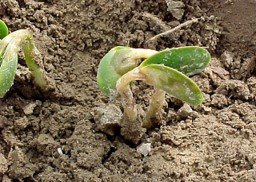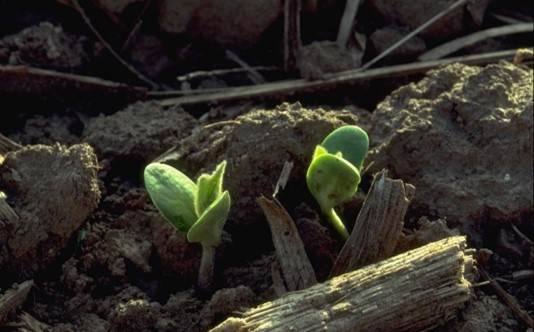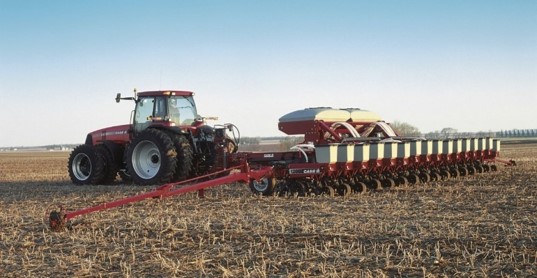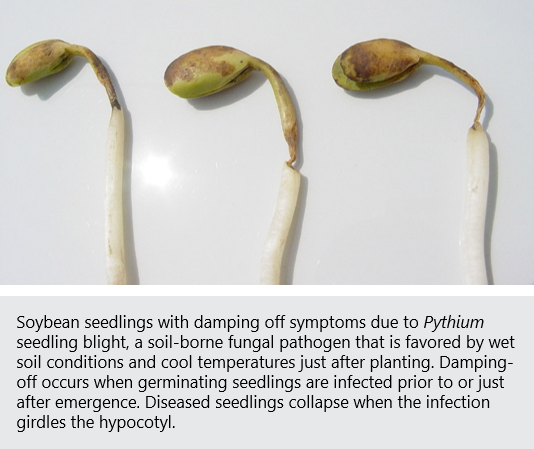- Emerged soybeans are more susceptible to damage from freezing temperatures than corn because their growing points are above the soil surface as soon as the plants emerge.
- Temperatures below 32º F (0º C) can cause frost damage to emerged soybean plants, while temperatures below 28º F (-2º C) for an extended period of time (>4 hrs) can be lethal, especially on lighter-textured soils.
- Heavier-textured soil can better store and release previously accumulated heat near the soil surface when air temperatures drop, helping to protect recently emerged soybean plants.
- High levels of residue on the soil surface can increase the risk of freezing injury by reducing the transfer of heat from the soil to the plants.
- A soybean plant at the cotyledon stage has three growing points – the main shoot and two axillary buds at the base of the cotyledons. Recovery from freezing injury is possible as long as at least one of these buds survives.
- Soybean seedlings that have just cracked the soil surface will be more tolerant to freezing temperatures than plants at the cotyledon or unifoliate stages.
- The cotyledons are full of solutes making them good buffers protecting the three potential growing points between them, making them more resistant to injury.
- Freezing damage that extends below the cotyledons will result in the death of the plant.

Just-emerged soybean plants damaged by frost. The cotyledons are still green and look healthy, but the region of the hypocotyl just below the cotyledonary node is turning brown and is becoming soft and shrunken.





